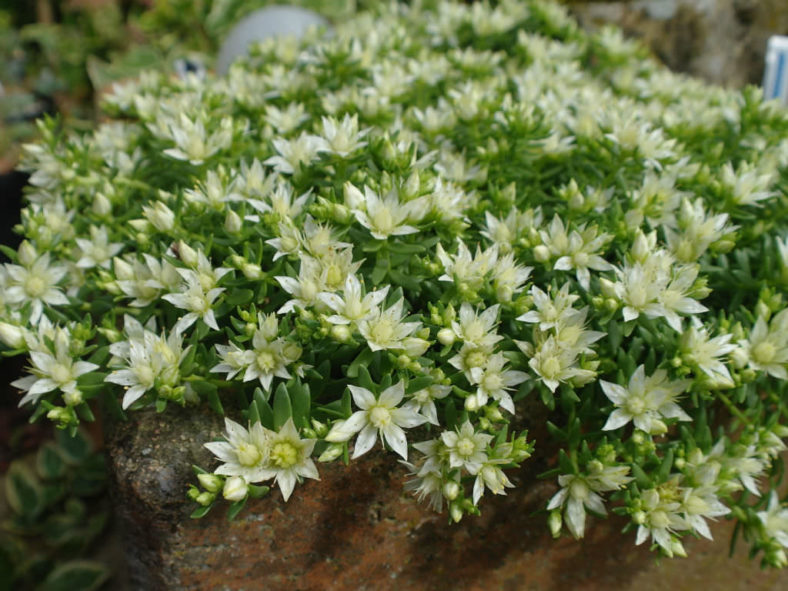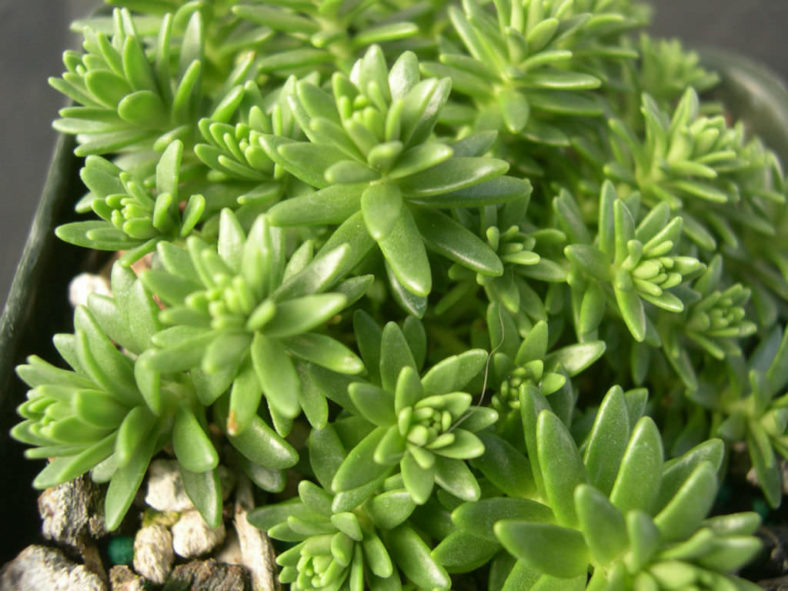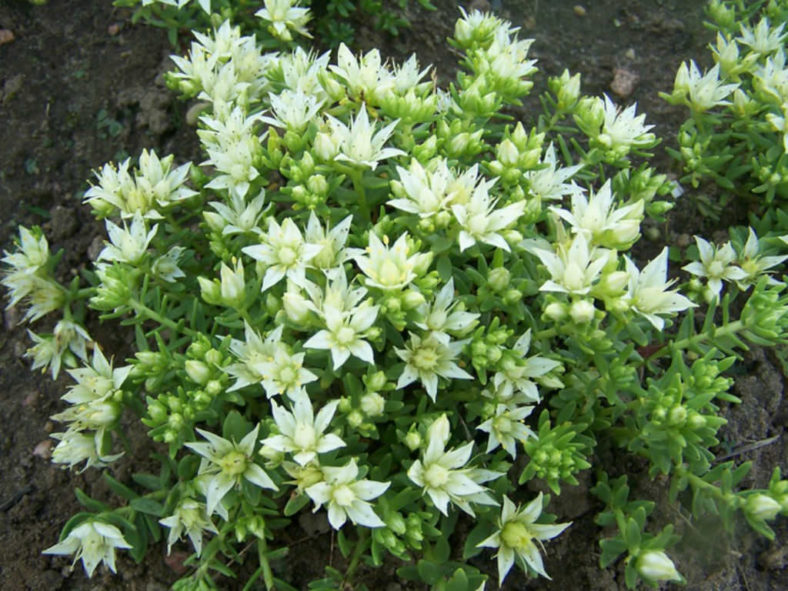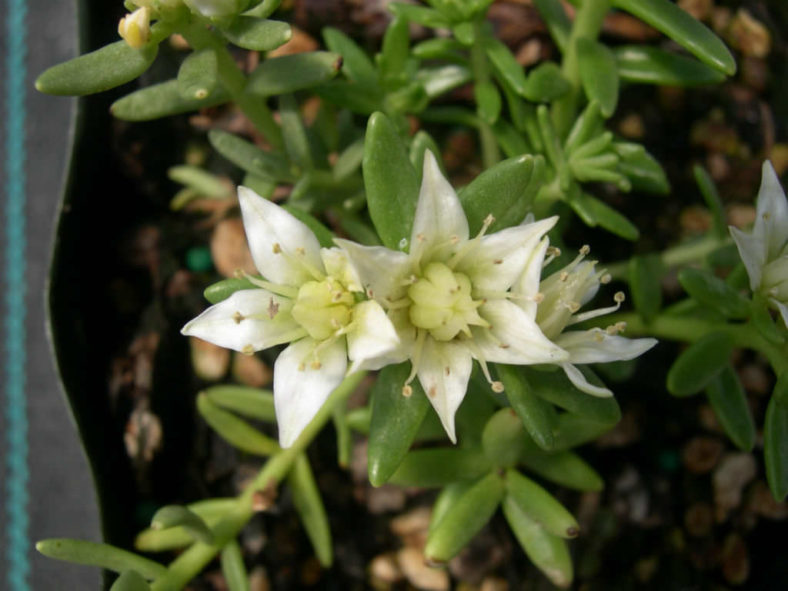Scientific Name
Rhodiola amabilis (H. Ohba) H. Ohba
Synonym(s)
Sedum amabile
Scientific Classification
Family: Crassulaceae
Subfamily: Sempervivoideae
Tribe: Umbiliceae
Genus: Rhodiola
Origin
This species is native to Nepal. It occurs in the Eastern Himalayas at elevations between 7,550 and 12,800 feet (2,300 and 3,900 m)
Description
Rhodiola amabilis, formerly known as Sedum amabile, is a lovely alpine succulent with small bright green leaves densely arranged on pale green stems. It grows up to 4 inches (10 cm) tall, forming an attractive dense mound. Leaves are linear to linear-Ianceolate, up to 0.5 inches (1.2 cm) long and 0.06 inches (0.15 cm) wide.
The flowers are star-shaped, up to 0.4 inches (1 cm) in diameter, with white petals, sometimes pink near the tip. They appear solitary or in clusters of up to 5 at the end of the stems in late summer and early fall.

Hardiness
USDA hardiness zones 4a to 9b: from −30 °F (−34.4 °C) to 30 °F (−1.1 °C).
How to Grow and Care
When growing Sedums, keep in mind that these plants need very little attention or care. They will thrive in conditions many other plants thrive in but do just as well in less hospitable areas. They are ideal for that part of your yard that gets too much sun or too little water to grow anything else. A common name for Sedum is Stonecrop because many gardeners joke that only stones need less care and live longer.
Sedum is easily planted. For shorter varieties, simply laying the plant on the ground where you want it to grow is usually enough to get started there. They will send out roots from wherever the stem touches the ground and root itself. If you would like to ensure further that the plant will start there, you can add a very thin covering of soil over the plant.
You can break off one of the stems for taller varieties and push it into the ground where you want to grow it. The stem will root very easily, and a new plant will be established in a season or two.
Learn more at How to Grow and Care for Sedum.
Links
- Back to genus Rhodiola
- Succupedia: Browse succulents by Scientific Name, Common Name, Genus, Family, USDA Hardiness Zone, Origin, or cacti by Genus
Photo Gallery
Click on a photo to see a larger version.


